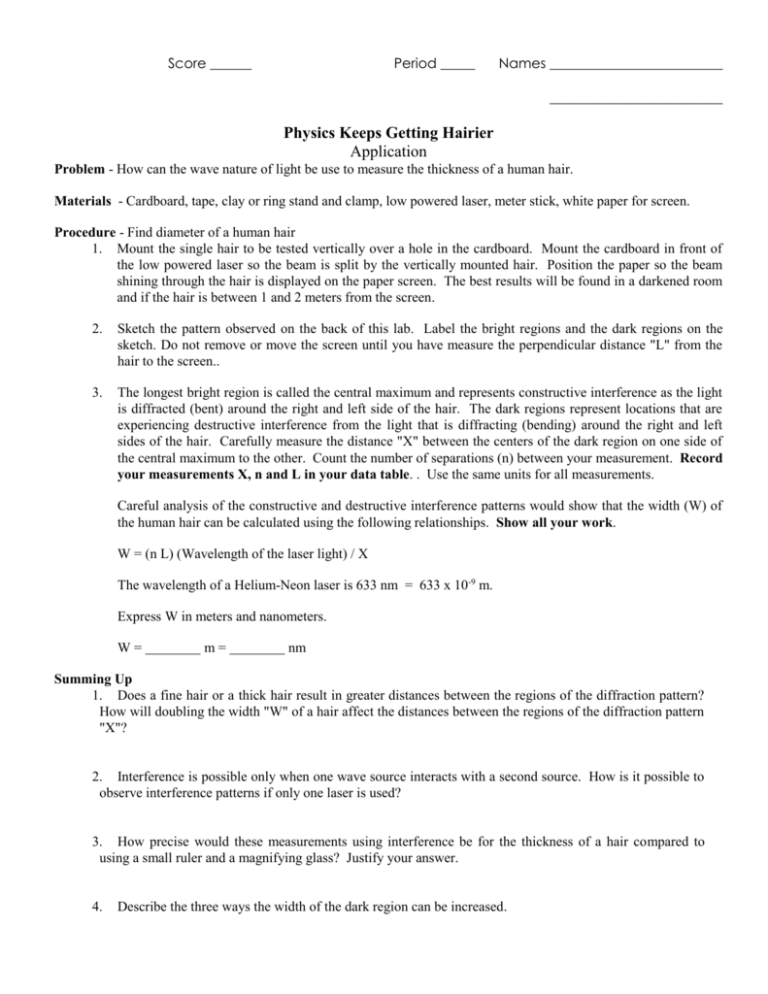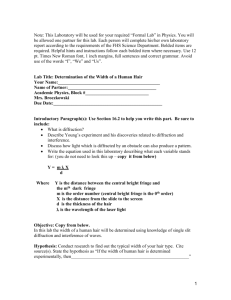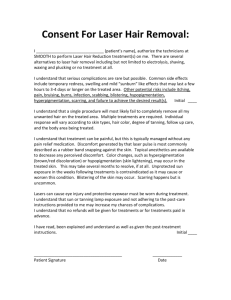PhysicsKeepsGetHair
advertisement

Score ______ Period _____ Names _________________________ _________________________ Physics Keeps Getting Hairier Application Problem - How can the wave nature of light be use to measure the thickness of a human hair. Materials - Cardboard, tape, clay or ring stand and clamp, low powered laser, meter stick, white paper for screen. Procedure - Find diameter of a human hair 1. Mount the single hair to be tested vertically over a hole in the cardboard. Mount the cardboard in front of the low powered laser so the beam is split by the vertically mounted hair. Position the paper so the beam shining through the hair is displayed on the paper screen. The best results will be found in a darkened room and if the hair is between 1 and 2 meters from the screen. 2. Sketch the pattern observed on the back of this lab. Label the bright regions and the dark regions on the sketch. Do not remove or move the screen until you have measure the perpendicular distance "L" from the hair to the screen.. 3. The longest bright region is called the central maximum and represents constructive interference as the light is diffracted (bent) around the right and left side of the hair. The dark regions represent locations that are experiencing destructive interference from the light that is diffracting (bending) around the right and left sides of the hair. Carefully measure the distance "X" between the centers of the dark region on one side of the central maximum to the other. Count the number of separations (n) between your measurement. Record your measurements X, n and L in your data table. . Use the same units for all measurements. Careful analysis of the constructive and destructive interference patterns would show that the width (W) of the human hair can be calculated using the following relationships. Show all your work. W = (n L) (Wavelength of the laser light) / X The wavelength of a Helium-Neon laser is 633 nm = 633 x 10-9 m. Express W in meters and nanometers. W= m= nm Summing Up 1. Does a fine hair or a thick hair result in greater distances between the regions of the diffraction pattern? How will doubling the width "W" of a hair affect the distances between the regions of the diffraction pattern "X"? 2. Interference is possible only when one wave source interacts with a second source. How is it possible to observe interference patterns if only one laser is used? 3. How precise would these measurements using interference be for the thickness of a hair compared to using a small ruler and a magnifying glass? Justify your answer. 4. Describe the three ways the width of the dark region can be increased.






